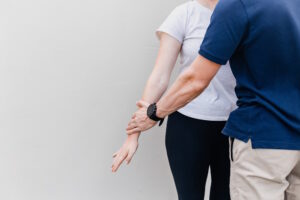
As a leading expert on Comparing Pilates with Other Rehabilitation Approaches, I am committed to providing a comprehensive understanding of the unique benefits and characteristics of Pilates as a rehabilitation method. When it comes to rehabilitating injuries, improving mobility, and enhancing overall well-being, various approaches exist. Pilates, with its focus on core strength, stability, and mind-body connection, has gained popularity as a safe and effective rehabilitation option. In this guide, we will explore the advantages of using Pilates in rehabilitation, the differences between Pilates and other exercises, the reasons for its widespread use in rehabilitation clinics, and the alternative approaches available.
What are four advantages of the use of Pilates in rehabilitation?
Pilates offers several advantages that make it a valuable tool in rehabilitation:
1. Core Strength and Stability: Pilates targets the deep core muscles, promoting core strength and stability. This is crucial for supporting the spine and providing a solid foundation for rehabilitation exercises.
2. Low-Impact Nature: Many Pilates exercises are low-impact, making them suitable for individuals with varying levels of mobility and injuries. The controlled movements reduce the risk of further strain or injury during the rehabilitation process.
3. Flexibility and Range of Motion: Pilates incorporates stretching movements that improve flexibility and joint mobility. This can be especially beneficial for individuals recovering from injuries or surgeries.
4. Mind-Body Connection: Pilates emphasizes a strong mind-body connection, promoting body awareness and conscious control over movement. This heightened awareness allows individuals to focus on proper form and alignment, reducing the risk of re-injury.
How is Pilates different from other exercises?
Pilates differs from other exercises in several key aspects:
1. Focus on Core Strength: Pilates places a significant emphasis on strengthening the core muscles, which sets it apart from many other exercises. This focus on core stability is essential for supporting the spine and promoting overall body alignment.
2. Controlled Movements: Pilates exercises involve controlled and precise movements, encouraging individuals to move with intention and awareness. This controlled approach helps prevent jerky or harmful movements during the rehabilitation process.
3. Mind-Body Connection: The mind-body connection is a fundamental principle of Pilates. Practitioners are encouraged to engage both their minds and bodies during exercises, fostering a deeper understanding of their movements and body mechanics.
4. Equipment Usage: Pilates can incorporate specialized equipment, such as the reformer or Cadillac, which allows for a wider range of exercises and variations. This equipment is designed to support proper alignment and enhance the effectiveness of Pilates movements.
Why is Pilates used in so many rehabilitation clinics?
Pilates is widely used in rehabilitation clinics for several reasons:
1. Customizability: Pilates exercises can be modified to suit individual needs and limitations, making it suitable for a diverse range of rehabilitation cases.
2. Safe and Low-Impact: The controlled and low-impact nature of Pilates exercises makes it a safe option for individuals with injuries or mobility issues.
3. Holistic Approach: Pilates addresses multiple aspects of rehabilitation, including core strength, flexibility, balance, and coordination, providing a holistic approach to recovery.
4. Professional Guidance: Rehabilitation clinics typically have qualified Pilates instructors who work closely with healthcare professionals to develop personalized rehabilitation programs.
What is the alternative to Pilates?
While Pilates offers numerous benefits, there are alternative rehabilitation approaches available, depending on individual needs and conditions:
1. Physical Therapy: Physical therapy is a comprehensive approach to rehabilitation that includes a variety of exercises, manual therapy techniques, and modalities to address specific injuries and conditions.
2. Occupational Therapy: Occupational therapy focuses on helping individuals regain skills for daily living and work-related tasks, often incorporating exercises to improve strength and coordination.
3. Aquatic Therapy: Aquatic therapy takes place in a pool, utilizing the buoyancy of water to reduce the impact on joints and enhance mobility.
4. Yoga Therapy: Yoga therapy is a specialized form of yoga that targets specific health concerns, including rehabilitation. It focuses on gentle movements and breathing exercises to support recovery.
Summary
Pilates offers distinct advantages in rehabilitation, including core strength, low-impact exercises, flexibility, and a strong mind-body connection. Its focus on core stability and controlled movements sets it apart from other exercises. The customizability and safe nature of Pilates make it a preferred choice in many rehabilitation clinics. However, alternatives such as physical therapy, occupational therapy, aquatic therapy, and yoga therapy also provide valuable options for individuals seeking rehabilitation. The choice of the most suitable approach depends on individual needs, conditions, and the guidance of qualified healthcare professionals.